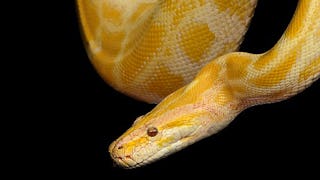Interested in learning how to solve partial differential equations with numerical methods and how to turn them into python codes? This course provides you with a basic introduction how to apply methods like the finite-difference method, the pseudospectral method, the linear and spectral element method to the 1D (or 2D) scalar wave equation. The mathematical derivation of the computational algorithm is accompanied by python codes embedded in Jupyter notebooks. In a unique setup you can see how the mathematical equations are transformed to a computer code and the results visualized. The emphasis is on illustrating the fundamental mathematical ingredients of the various numerical methods (e.g., Taylor series, Fourier series, differentiation, function interpolation, numerical integration) and how they compare. You will be provided with strategies how to ensure your solutions are correct, for example benchmarking with analytical solutions or convergence tests. The mathematical aspects are complemented by a basic introduction to wave physics, discretization, meshes, parallel programming, computing models.



Computers, Waves, Simulations: A Practical Introduction to Numerical Methods using Python

Instructor: Heiner Igel
26,119 already enrolled
(384 reviews)
Recommended experience
What you'll learn
How to solve a partial differential equation using the finite-difference, the pseudospectral, or the linear (spectral) finite-element method.
Understanding the limits of explicit space-time simulations due to the stability criterion and spatial and temporal sampling requirements.
Strategies how to plan and setup sophisticated simulation tasks.
Strategies how to avoid errors in simulation results.
Skills you'll gain
Details to know

Add to your LinkedIn profile
9 assignments
See how employees at top companies are mastering in-demand skills


Earn a career certificate
Add this credential to your LinkedIn profile, resume, or CV
Share it on social media and in your performance review

There are 9 modules in this course
The use of numerical methods to solve partial differential equations is motivated giving examples form Earth sciences. Concepts of discretization in space and time are introduced and the necessity to sample fields with sufficient accuracy is motivated (i.e. number of grid points per wavelength). Computational meshes are discussed and their power and restrictions to model complex geometries illustrated. The basics of parallel computers and parallel programming are discussed and their impact on realistic simulations. The specific partial differential equation used in this course to illustrate various numerical methods is presented: the acoustic wave equation. Some physical aspects of this equation are illustrated that are relevant to understand its solutions. Finally Jupyter notebooks are introduced that are used with Python programs to illustrate the implementation of the numerical methods.
What's included
6 videos1 reading1 assignment1 ungraded lab
In Week 2 we introduce the basic definitions of the finite-difference method. We learn how to use Taylor series to estimate the error of the finite-difference approximations to derivatives and how to increase the accuracy of the approximations using longer operators. We also learn how to implement numerical derivatives using Python.
What's included
8 videos1 assignment3 ungraded labs
We develop the finite-difference algorithm to the acoustic wave equation in 1D, discuss boundary conditions and how to initialize a simulation example. We look at solutions using the Python implementation and observe numerical artifacts. We analytically derive one of the most important results of numerical analysis – the CFL criterion which leads to a conditionally stable algorithm for explicit finite-difference schemes.
What's included
9 videos1 assignment2 ungraded labs
We develop the solution to the 2D acoustic wave equation, compare with analytical solutions and demonstrate the phenomenon of numerical (non-physical) anisotropy. We extend the von Neumann Analysis to 2D and derive numerical anisotropy analytically. We learn how to initialize a realistic physical problem and illustrate that 2D solution are already quite powerful to understand complex wave phenomena. We introduced the 1D elastic wave equation and show the concept of staggered-grid schemes with the coupled first-order velocity-stress formulation.
What's included
10 videos1 assignment5 ungraded labs
We start with the problem of function interpolation leading to the concept of Fourier series. We move to the discrete Fourier series and highlight their exact interpolation properties on regular spatial grids. We introduce the derivative of functions using discrete Fourier transforms and use it to solve the 1D and 2D acoustic wave equation. The necessity to simulate waves in limited areas leads us to the definition of Chebyshev polynomials and their uses as basis functions for function interpolation. We develop the concept of differentiation matrices and discuss a solution scheme for the elastic wave equation using Chebyshev polynomials.
What's included
9 videos1 assignment4 ungraded labs
We introduce the concept of finite elements and develop the weak form of the wave equation. We discuss the Galerkin principle and derive a finite-element algorithm for the static elasticity problem based upon linear basis functions. We also discuss how to implement boundary conditions. The finite-difference based relaxation method is derived for the same equation and the solution compared to the finite-element algorithm.
What's included
5 videos1 assignment1 ungraded lab
We extend the finite-element solution to the elastic wave equation and compare the solution scheme to the finite-difference method. To allow direct comparison we formulate the finite-difference solution in matrix-vector form and demonstrate the similarity of the linear finite-element method and the finite-difference approach. We introduce the concept of h-adaptivity, the space-dependence of the element size for heterogeneous media.
What's included
7 videos1 assignment1 ungraded lab
We introduce the fundamentals of the spectral-element method developing a solution scheme for the 1D elastic wave equation. Lagrange polynomials are discussed as the basis functions of choice. The concept of Gauss-Lobatto-Legendre numerical integration is introduced and shown that it leads to a diagonal mass matrix making its inversion trivial.
What's included
7 videos1 assignment2 ungraded labs
We finalize the derivation of the spectral-element solution to the elastic wave equation. We show how to calculate the required derivatives of the Lagrange polynomials making use of Legendre polynomials. We show how to perform the assembly step leading to the final solution system for the elastic wave equation. We demonstrate the numerical solution for homogenous and heterogeneous media.
What's included
7 videos1 assignment2 ungraded labs
Instructor

Recommended if you're interested in Research Methods


The Hong Kong University of Science and Technology


University of California, Davis


Johns Hopkins University
Why people choose Coursera for their career




Learner reviews
384 reviews
- 5 stars
82.29%
- 4 stars
14.06%
- 3 stars
1.82%
- 2 stars
1.56%
- 1 star
0.26%
Showing 3 of 384
Reviewed on Oct 7, 2019
It was a great course. I think you should had included the lambda parameter into the elastic wave propagation.
Reviewed on Aug 6, 2022
Excellent Course, Really appreciated the effort instructor have put in with intereactive examples and implementations.
Reviewed on Feb 24, 2019
I already know that I will learn a lot even though I am an undergrad. ( FTD from Colorado School of Mines)

Open new doors with Coursera Plus
Unlimited access to 10,000+ world-class courses, hands-on projects, and job-ready certificate programs - all included in your subscription
Advance your career with an online degree
Earn a degree from world-class universities - 100% online
Join over 3,400 global companies that choose Coursera for Business
Upskill your employees to excel in the digital economy
Frequently asked questions
Access to lectures and assignments depends on your type of enrollment. If you take a course in audit mode, you will be able to see most course materials for free. To access graded assignments and to earn a Certificate, you will need to purchase the Certificate experience, during or after your audit. If you don't see the audit option:
The course may not offer an audit option. You can try a Free Trial instead, or apply for Financial Aid.
The course may offer 'Full Course, No Certificate' instead. This option lets you see all course materials, submit required assessments, and get a final grade. This also means that you will not be able to purchase a Certificate experience.
When you purchase a Certificate you get access to all course materials, including graded assignments. Upon completing the course, your electronic Certificate will be added to your Accomplishments page - from there, you can print your Certificate or add it to your LinkedIn profile. If you only want to read and view the course content, you can audit the course for free.
You will be eligible for a full refund until two weeks after your payment date, or (for courses that have just launched) until two weeks after the first session of the course begins, whichever is later. You cannot receive a refund once you’ve earned a Course Certificate, even if you complete the course within the two-week refund period. See our full refund policy.
More questions
Financial aid available,



